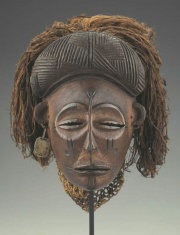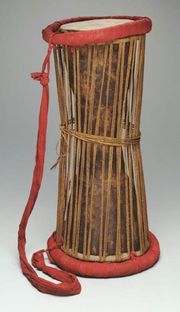Difference between revisions of "Vegetable fiber"
| Line 1: | Line 1: | ||
| − | [[File:1985.833-SC24645.jpg|thumb|]] | + | [[File:1985.833-SC24645.jpg|thumb|Bell rattle<br>MFA# 1987.833]] |
== Description == | == Description == | ||
[[File:1991.354-SC14605.jpg|thumb|]] | [[File:1991.354-SC14605.jpg|thumb|]] | ||
Revision as of 09:59, 14 October 2020
Description
Any fiber obtained from plant sources. Plant fibers are obtained from the bark and stems (Flax, Hemp, Kenaf, Jute, Ramie), leaves (Abaca, Sisal) and seeds or fruits (Coir, Cotton, Kapok) of various plants. Plant fibers, in general will flame when exposed to fire while animal fibers will only char. Plants fibers can be characterized by several methods (See Goodway, 1987). When wetted, then dried, some plant fibers will have a right-hand rotation (flax and Ramie), while most other vegetable fibers have a subtle left-handed rotation. Cotton, however collapses randomly with both right- and left-handed twists. Fibers from wood and bark have connecting, elongated cells such as seen in linen, hemp and groundwood paper.
See FRIL for microscopic images of plant fibers.
Synonyms and Related Terms
plant fibers; plant fibre (Br.); vegetable fiber; fibre végétale (Fr.);fibras vegetales(Esp.
Resources and Citations
- Hoechst Celanese Corporation, Dictionary of Fiber & Textile Technology (older version called Man-made Fiber and Textile Dictionary, 1965), Hoechst Celanese Corporation, Charlotte NC, 1990
- S.R.Trotman, E.R. Trotman, Textile Analysis, J.B. Lippincott Company, Philadelphia, 1932
- Rosalie Rosso King, Textile Identification, Conservation, and Preservation, Noyes Publications, Park Ridge, NJ, 1985
- Art and Architecture Thesaurus Online, http://www.getty.edu/research/tools/vocabulary/aat/, J. Paul Getty Trust, Los Angeles, 2000
- Wikipedia: https://en.wikipedia.org/wiki/Fiber_crop (accessed October 2020)


